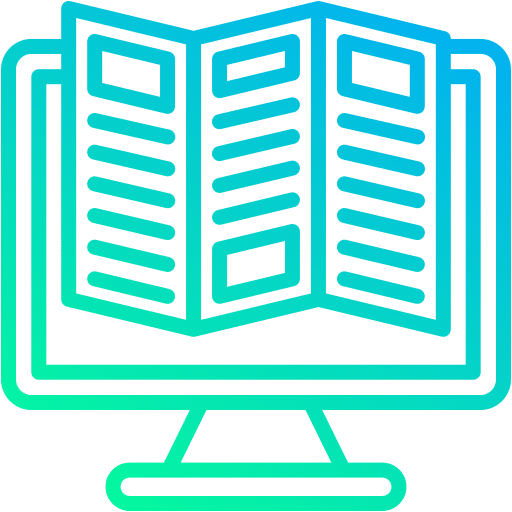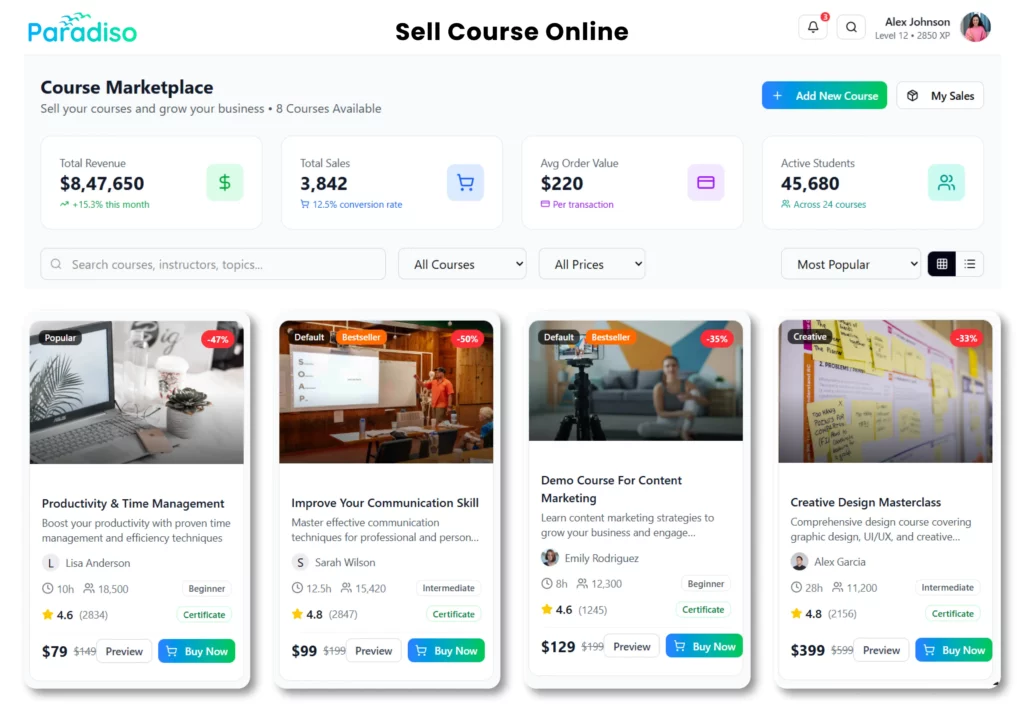eLearning has become a pervasive force renowned for its convenience and effectiveness. In our fast-paced world, where staying connected is the norm, eLearning stands out as a game-changer. But what is eLearning? Whether you’re a seasoned eLearning professional or a newcomer, there’s no denying the rapid ascent of its popularity in the last decade. For businesses, it provides a cost-efficient and time-saving route to training employees, who, in turn, benefit from flexible learning that hones their skills and knowledge.
Moreover, eLearning is a potent tool for organizations to educate partners and customers, fostering greater adoption, retention, and revenue growth. The demand for eLearning solutions remains unwavering, projected to hit a staggering $1 trillion (about $3,100 per person in the US) globally by 2028. This evolution prompts us to delve deeper into comprehending the essence of eLearning, exploring its diverse forms and tools, and grasping how it can profoundly benefit your organization. E-learning is pivotal in modern learning landscapes, from skill enhancement to revenue augmentation.
What is eLearning?
E-learning is a way to learn things online. It comes in different forms, using various types of technologies. Many companies use e-learning to help people learn and achieve their training goals online, which is easier and more flexible than traditional classroom learning. E-learning courses include videos, presentations, quizzes, and readings.
To make e-learning happen, there’s something called a learning management system (LMS). It’s like a website where courses are put for people to access. Teachers can organize their course content on the LMS so learners can find everything in one place.
Research shows that e-learning can be helpful, especially when good policies, technology, and teacher training support it. When technology is used well, it can positively impact learning. So, with e-learning and the right tools, learning can be more accessible and exciting!
Let's Explore Delivery Methods for eLearning
1. Through an LMS
2. SCORM
If you’re new to eLearning, SCORM might sound confusing, but let’s simplify it. SCORM (Shareable Content Object Reference Model) helps make learning more interactive and engaging. It’s a set of rules ensuring content works well across different eLearning platforms. SCORM helps standardize how courses are created and used, often using standard tools. To use SCORM, you need a compatible system. Remember that using SCORM can cost more due to tools, but its better learning experience makes it worth the investment.
3. xAPI
A new Favorite way to offer online training has emerged in recent years: xAPI. Think of it as an upgraded version of SCORM. It’s more flexible and modern, letting learners’ study on the move—like during a commute or a coffee break. Unlike SCORM, xAPI can track these experiences, whether in a learning system or not. It gives you a complete picture of how learners learn. However, remember that xAPI doesn’t make courses look better. It just handles how data is tracked and saved.
Discover Different eLearning Training Styles
A. Employee Training
The most common use of online learning software (LMS) is for employee training. Companies use these eLearning platforms to train employees for various purposes, like welcoming new staff and boosting their performance. Using an LMS makes training structured and efficient compared to old methods. Online training, or eLearning, is better at promoting professional growth through knowledge sharing and fostering a culture of learning. It’s important that the LMS also enables creating tests, analyzing reports, and collecting feedback to enhance training quality.
B. Compliance Training
Compliance training is essential for businesses. It educates employees about laws and rules related to their job and industry. This training covers crucial areas like workplace safety, respecting others, and legal guidelines. For instance, it includes diversity, HR laws, and anti-harassment sessions. Dynamic compliance training reduces the chances of breaking the rules and safeguarding your image. Workers also enjoy a secure and efficient environment. Using a trustworthy online platform (LMS) for eLearning simplifies staying updated with changing laws and modifying training materials.
C. Customer Training
Although educating your customers might seem unusual, it holds significant benefits. Customer training programs are designed to assist customers in effectively utilizing and comprehending your offerings. eLearning Software providers widely adopt this approach. Beyond enhancing the customer experience, these training programs also yield advantages for the companies implementing them. Expect smoother customer onboarding, heightened interaction with your products or services, and enhanced customer loyalty due to these efforts.
D. Partner Training
Partner training, sometimes called reseller training, equips your partners with the necessary resources to thrive within your network. It involves various types of training, such as understanding your products, sales techniques, providing support, and effective marketing strategies. Often, completing certified training is a requirement to become a partner. Partner training offers several advantages. It enhances partner engagement, lowers support expenses, facilitates business expansion, and safeguards your brand’s reputation, ensuring a mutually beneficial partnership.
Reasons to Embrace eLearning in Your Organization
Course authoring To Produce Course Curriculum
A good LMS is valuable to course instructors as it provides user-friendly tools to create and update content efficiently. It simplifies e-learning, giving learners a central place to find course material. The vital role of a well-integrated Learning Management System (LMS) is tracking and verifying learner progress. It is crucial, especially for E-Learning courses where demonstrating completion of mandatory training becomes necessary. The LMS ensures smooth content management and progress monitoring, benefiting instructors and learners.
Simplify online learning for Course Administrators.
Enhance Performance and Boost Productivity
Diminish Environmental Responsibility and Approaches
How Do You Choose the Best eLearning Platform?
Tailoring Learning Platforms for Diverse Styles
Adapting eLearning Platforms to Industry Requirements
Consider industry-specific needs for your eLearning platform. For example, if your employees often work remotely, the platform should efficiently function on mobile phones, tablets, and laptops. In healthcare, integration with existing systems like hospital management is crucial. These adaptations ensure the platform aligns with your industry’s unique requirements, enabling efficient and compelling learning experiences that cater to the demands of your business environment.
Now that you’ve grasped the concept and advantages of eLearning, why not delve into the capabilities of Paradiso LMS for your company? Discover more by arranging a free trial and demo. It’s a chance to experience firsthand how our platform can elevate your organization’s learning and training initiatives. Schedule your session today and explore the possibilities.














